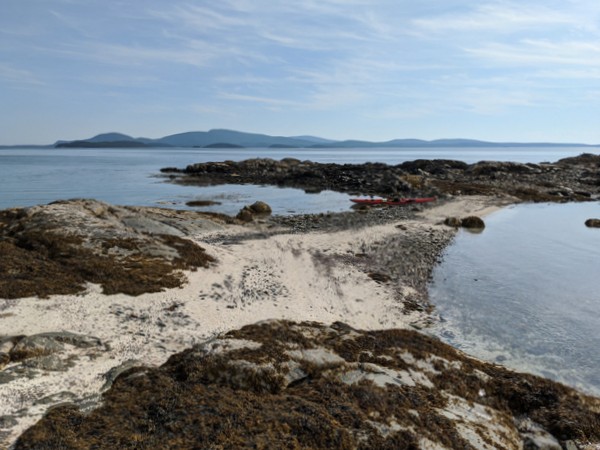
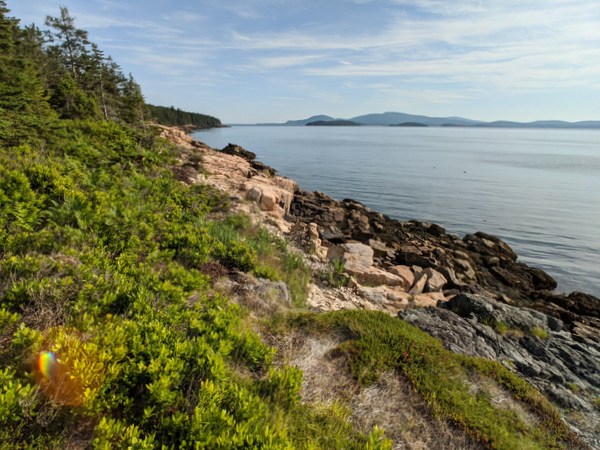
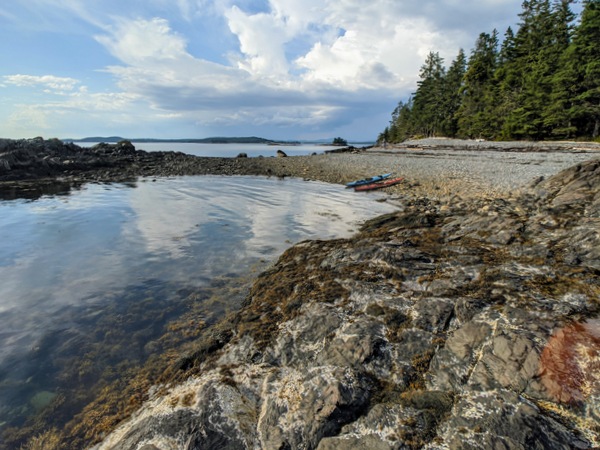
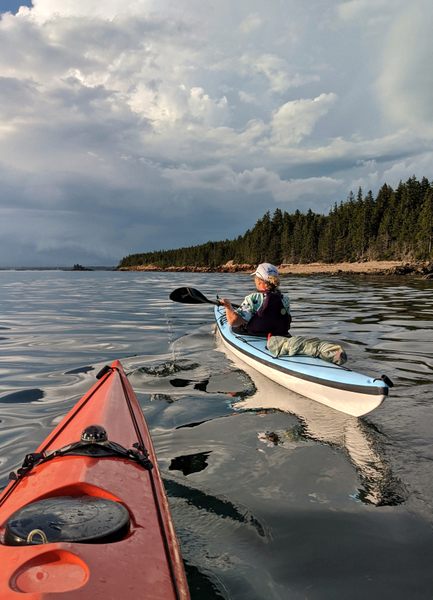
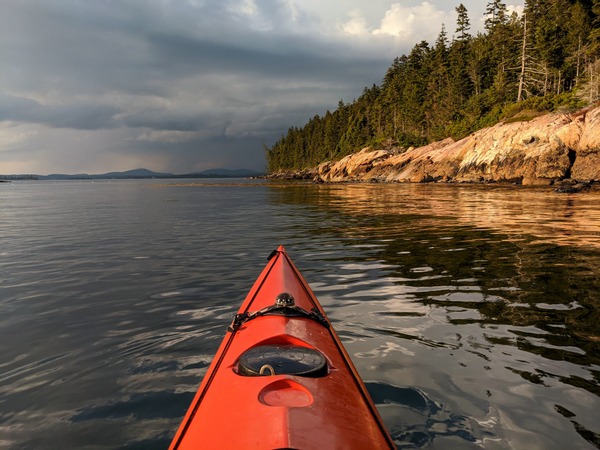
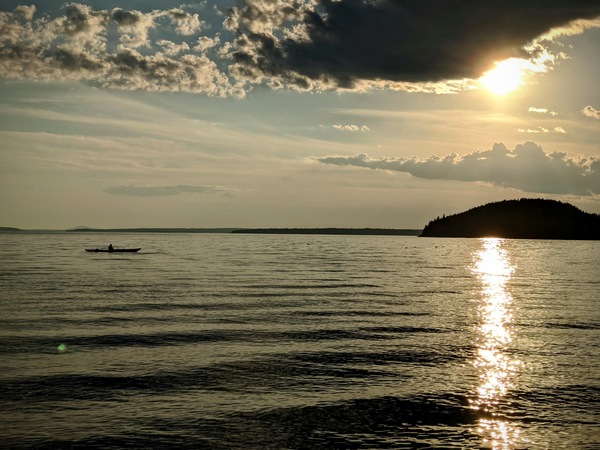
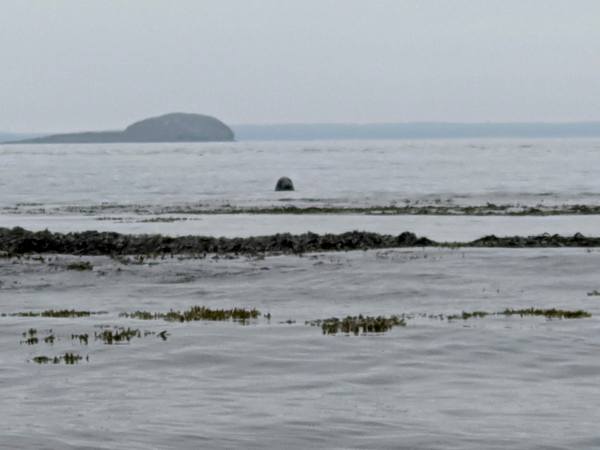
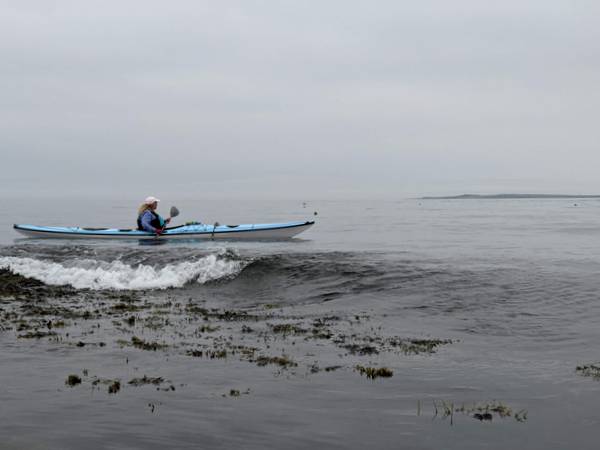
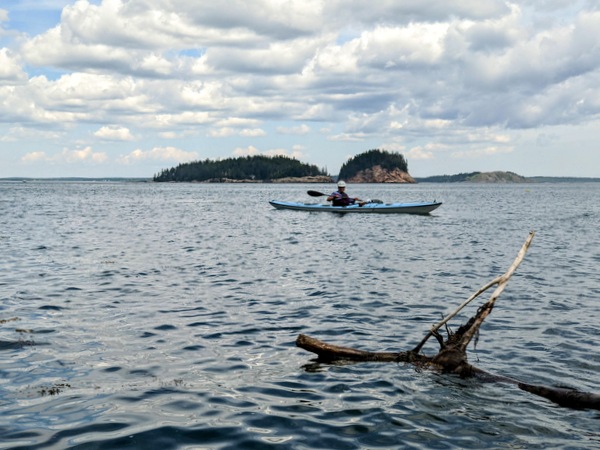
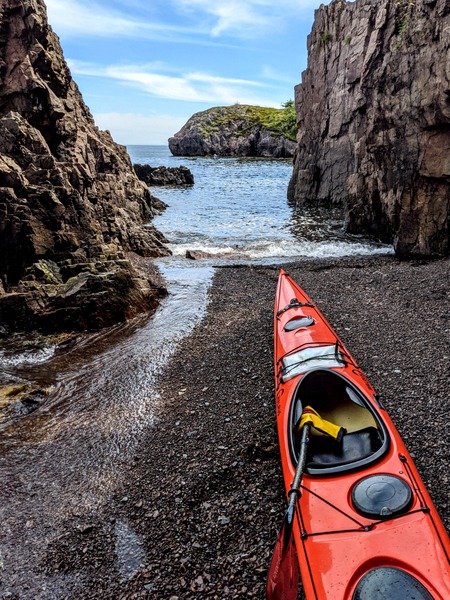
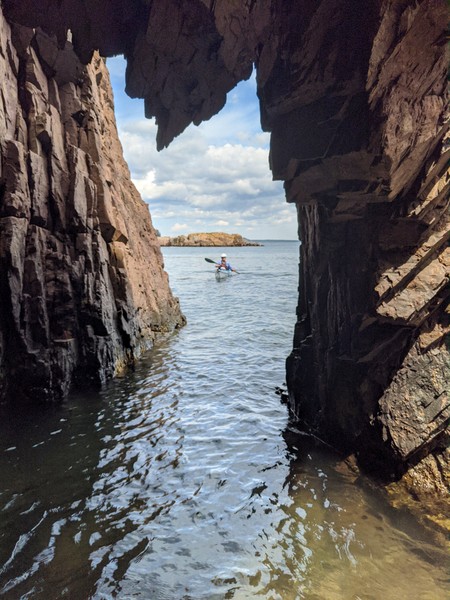
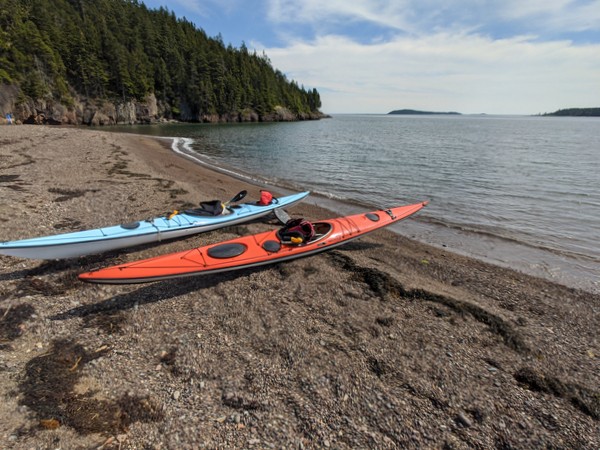
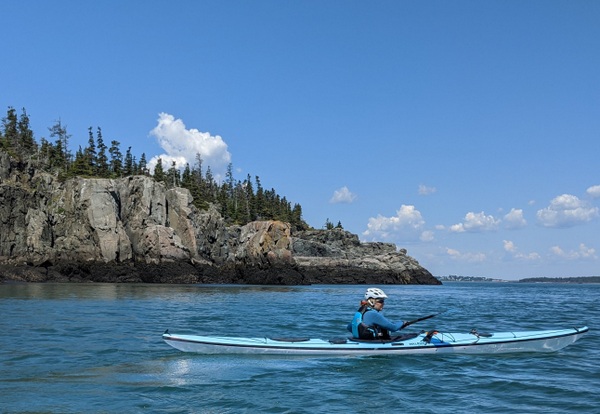
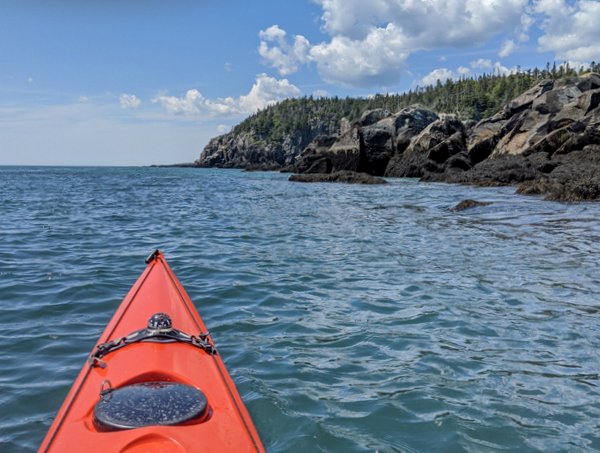
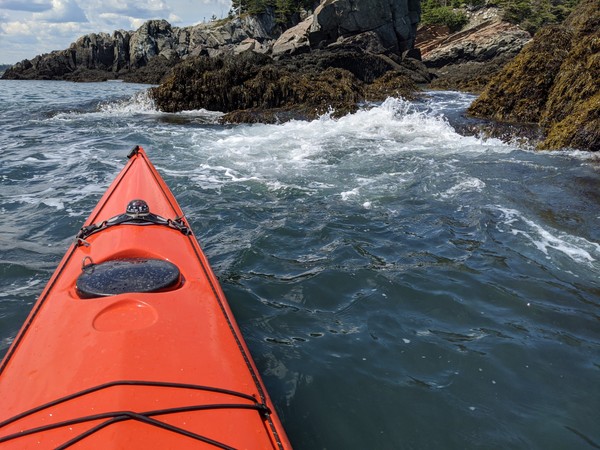
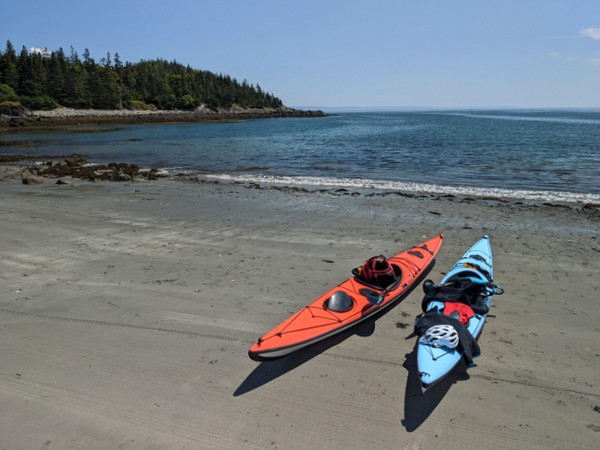
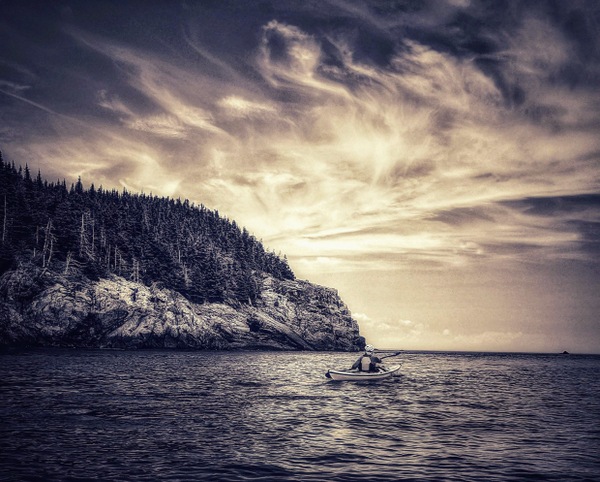
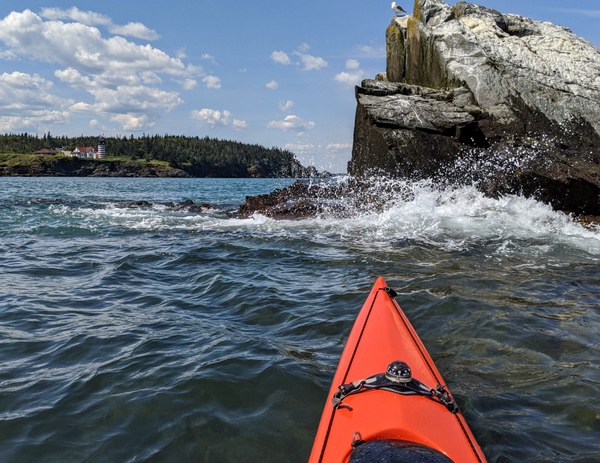
The wildwater boat is sometimes viewed as a specialty boat, but in many ways it is more versatile than most of the boats on the market. Imagine you wanted to combine the speed of a surf ski, the buoyancy of a creek boat, the turning ability of a slalom boat, and the toughness of a whitewater boat. The wildwater kayak is what you would end up with.
According to the United States Canoe Association, wildwater kayaks have a maximum length of 4.5 meters (14 feet 9 3/16 inches). Rules prohibit wildwater kayaks from having rudders. Other than that, the design of kayaks used for wildwater is open. Most modern wildwater kayaks, however, are narrower than 20 inches at waterline and have considerable above-waterline reserve buoyancy. Much of the reserve buoyancy is in the “wings” that flare out just aft of the cockpit.
Two examples of high end composite wildwater kayaks from Zastera are below:
 |
| The Zastera Corvette |
 |
| The Zastera Aggressor |
Those just getting into the sport can start with just about any durable kayak (yes, you will mix it up with rocks) that is 14’9″ or shorter. The Perception Wavehopper (discontinued in the U.S. but available used) and the Pyranha Speeder are reasonably fast polyethylene kayaks well suited for wildwater racing on Class I, II, and III whitewater.
Wildwater Kayaks are fast due to their narrowness. Their narrowness makes them “twitchy.” Their twitchiness makes them a challenge. Never a dull moment in a wildwater boat. In the unlikely event you start experiencing those kinds of moments, time to get a narrower boat.
Wildwater Kayaking is part of the Penobscot River Nationals Regatta on Maine’s Penobscot River in July 2016. The event is open to wildwater racers of all experience levels, and paddlers are at least as friendly as they are competitive. Come and join the fun!
From my biased perspective, it’s hard to understand why wildwater kayaking is not more popular.
Wildwater kayaking gets you outside, provides adventure, and takes you to beautiful natural places.
Wildwater provides similar cardiovascular benefits as sports such as running, bicycling, and surf ski racing.
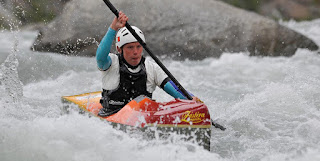 |
| Photo from WWKC.net |
At the same time, wildwater provides the same rush of that can be found in sports such as downhill skiing, snowboarding, and whitewater playboating.
In addition, like golf or tennis, wildwater is a thinking person’s sport that rewards experience, knowledge, and technique.
One trend in paddlesports is the “first descent” — elite paddlers racking up air miles in order to take on never-before-paddled stretches of whitewater in Africa, Asia, or South America — and expending increasingly huge amounts of resources as they do so.
Many local paddlers follow the same pattern but on a smaller scale. As they master local rivers, they are forced to drive farther from home to again experience the level of challenge and exhilaration they used to get from rivers closer to home.
Wildwater paddling is an antidote to this problem. Imagine spending months or years paddling the same local river but in progressively narrower and tippier boats. Imagine that each time you race that same river, you are looking to run better lines and to cut seconds off your previous best time.
If a quest for improvement that draws on cardiovascular fitness, strength, technique, ability to read the water, and knowledge of particular rivers is appealing, wildwater racing could be for you.
A couple of resources for learning more about wildwater racing include:
NRS Toaster mitts are not a new product. In fact, they have been around for a long time and are now listed as an NRS closeout, but they are new to me.
I’ve been paddling with Toaster Mitts since November and am thrilled with the level of comfort they bring to my previously wet and cold hands.
Previous to using Toaster Mitts, I was an enthusiastic pogie user. (This is the point in my blog where I may be losing my non-kayaking readers. ‘What’s a pogie?’ They might well ask.) Enthusiastic, yes. After all, pogies are a world above neoprene paddling gloves — both in terms of providing a firm grip on the paddle and maintaining a level of comfort for the hands.
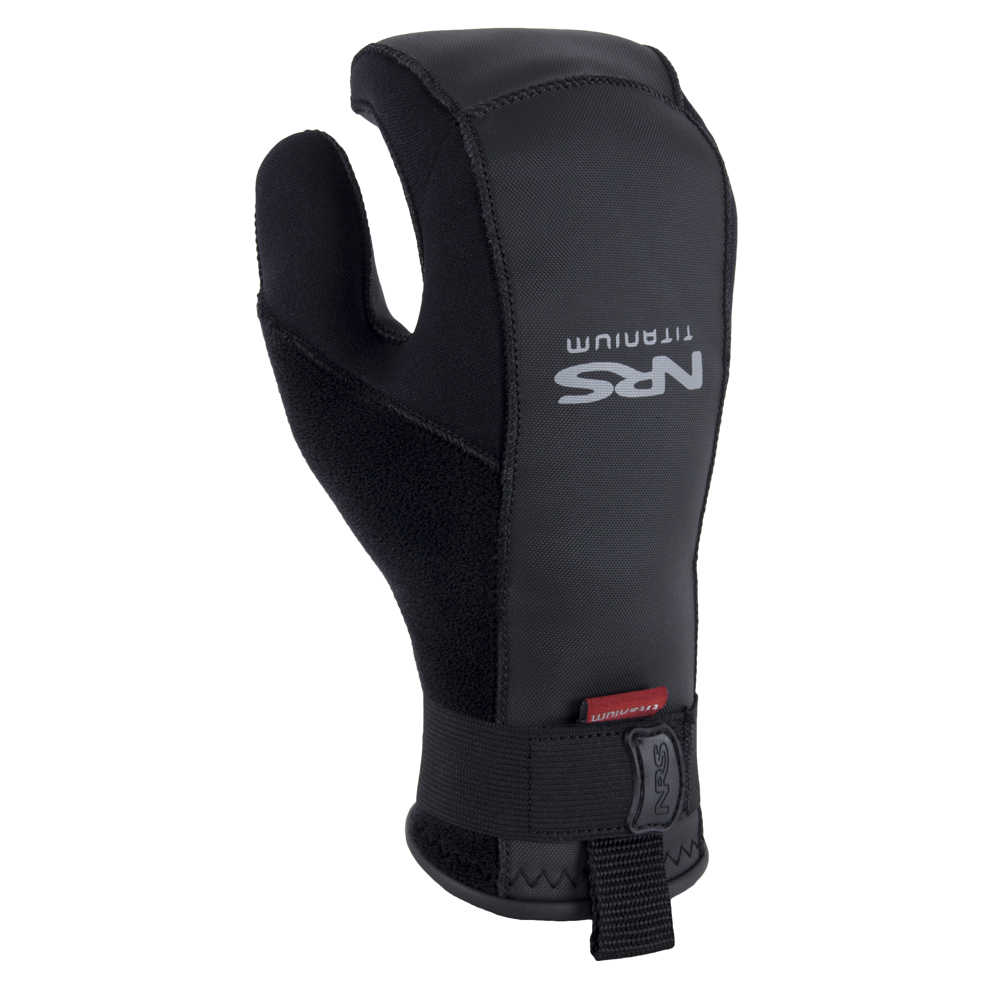 Pogies, as I learned over time, do have a number of shortcomings: (1) once pogies get wet, they are, well, wet — and so are your hands; (2) if you paddle in waves or whitewater, your pogies will get wet; (3) if you paddle with a wing or a Greenland paddle (think no drip rings) your pogies will, see above, get wet; (4) in the event of capsize or when going ashore, once you take your hand off your paddle, your pogies are no longer with you.
Pogies, as I learned over time, do have a number of shortcomings: (1) once pogies get wet, they are, well, wet — and so are your hands; (2) if you paddle in waves or whitewater, your pogies will get wet; (3) if you paddle with a wing or a Greenland paddle (think no drip rings) your pogies will, see above, get wet; (4) in the event of capsize or when going ashore, once you take your hand off your paddle, your pogies are no longer with you.
The NRS Toaster mitt is a fuzzy-lined neoprene mitten shaped to curve around your paddle shaft and fit snugly around your wrist, and with enough texture to provide a good grip on your paddle. The thickness is just right. Thin enough to provide a feel for the paddle shaft. Thick enough to provide warmth. NRS provides a fit chart and guidelines to measuring your hand so the right fit is assured when ordered online. They come on and off more quickly than a pogie as well.
And they stay dry.
I’ve used mine in temps approaching up to 50 degrees and down into the upper 20’s. I expect I’ll be using them for the first races of the
whitewater series this spring.’
The NRS Toaster Mitt is now on sale for $33.75 at NRS. I like them so much I ordered a second pair. Get them before they are gone!
Despite a winter that brought 100 inches of snow, the 2015 spring whitewater season in midcoast Maine was all too brief. Our annual transition to the bays and islands thus came a little sooner than usual. Based on demand, our summer featured day tours out of Belfast, Rockport, and Camden harbors as well as Stonington. in 2015, for the first time, we offered stand up paddle board rentals and instruction. Our own paddling included racing in the Whitewater Nationals in Old Town/Bangor and sea kayaking forays further Downeast to Cutler, Lubec, and Campobello. Early dawn paddles seeking out whales in the fog has become one of our passions. We plan to offer tours out of Lubec and Campobello in summer 2016. Thanks to all those who joined our tours in 2015. We hope to see you all again next summer!
Over the next few months, we plan to feature some of the places in Maine that we explored last summer in hopes this will inspire our readers to “get out there” in 2013.
We’ll start with Mt. Kineo, located on a peninsula extending from the eastern shore of Moosehead Lake. Mt. Kineo, as well as the 1,000 acre “island: it is situated on, is a Maine landmark long famous to calendars and postcards. Native Americans used it as a gathering place. Thoreau journeyed there and wrote about it. Hundreds of thousands of tourists have visited it, dating back to the 1800’s.
During the summer months, you can take a boat trip out from Rockwood for $10.00, and then hike around the island and climb to the summit.
If you have a kayak — and get the right day, you can do as we did, and paddle out to the island yourself. We launched from the public boat landing in Rockwood, made the one mile crossing to the island, and then, after debating whether to hike or paddle — not enough daylight left for both — we paddled around it. Our chosen route took us in a counter-clockwise direction. It included a short portage over the causeway on the eastern side of island and breathtaking views of the 700 foot rhyolite cliffs that rise directly from the lake. The distance around the island is about 7 miles.
A caution — the crossing can be choppy, and this part of the lake is especially susceptible to sudden changes in weather and wind. Please do not attempt to paddle there unless you are experienced in making crossings, have settled weather, and have a plan for what to do if the weather undergoes unpredicted changes. Winds tend to intensify toward mid-afternoon, so morning is often the safest time for your crossings.
Resources:
Mt. Kineo State Park
If the Passagassawakeag River is the main artery of Belfast, then the quarter mile stretch between Shepard Road and Route 137 is its secret heart.
Paddlers typically take out above this section, partly due to the dam, partly due to the challenging whitewater that lies below. Those on foot can look downstream from the Shepard Road bridge, from where you will see the first 100 yards. You can also look upstream from Route 137 for about 75 yards. That still leaves a couple hundred yards of secret river, shielded by the sightlines, property lines, trees, and steep terrain — that has been seen by few and traveled by even fewer.
Depending on the time of year and recent rainfall, this section of river appears a boulder-filled stream or a raging, wave-filled torrent. From what I have seen, you’re in for a good ride when water is spilling over the top of the dam. This normally occurs only in the spring or after an especially heavy rain.
When the river is running high, as it was a week ago, the water from the dam passes underneath the Shepard Road bridge and then races southeast down a rocky channel filled with waves. About a hundred yards in, the river splits around a low island. From there, the river swings to the southwest, narrows and quickens. It then enters a gorge that twists south and then southeast. Somewhere in that turn, with a cliff face defining the right bank, the narrowed, churning river simultaneously twines and plunges over a three foot drop. Below this drop is a frothy tumult of waves big as refrigerators.
From there, the river rushes onward toward the Route 137 bridge straightening out and tumbling over numerous rocks as it goes.
Fall whitewater is a special treat. When we go weeks or months without paddling a river, we start breaking out maps and looking for rivers that still have water. It’s great when you don’t have to go anywhere — and the rivers come back to you.
*Paddling this section requires Class III whitewater skills. The waves are large and currents are strong. Maneuvering and bracing skills are needed. Additionally, at this time of year, the water is cold. Please do not paddle this section unless you have proper equipment and experience and have proved yourself on the easier sections of local rivers.